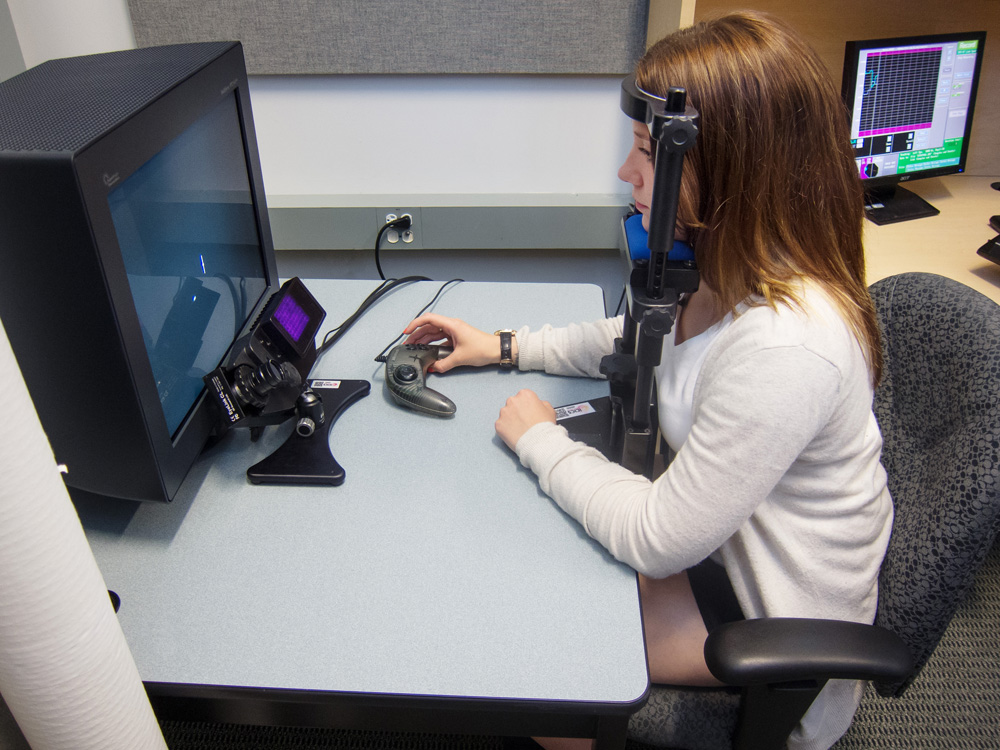Project title: Eye movements in wheelchair users
This study is about your perception of moving objects and how you track them using eye movements. We investigate whether perception of motion and eye movements are equally good in all directions, for instance, if your eyes follow an object that moves upwards as accurately as an object that moves downwards. One of our previous studies has shown that eye movements are asymmetric – better in some directions than in others. Interestingly, two participants who were wheelchair users, showed the opposite asymmetries to everyone else. If you are a wheelchair user your participation will help us understand the nature and origin of why eye movements are asymmetric. The results will help us learn more about the way we see the world and the accuracy and constraints of our visual-motor system.
Who can participate? To participate, you must be a wheelchair user (motorized or manual) between 19 and 60 years of age. You must have normal or corrected-to-normal visual acuity (glasses or soft contact lenses are OK) and no eye disease (such as glaucoma or amblyopia, “lazy eye”).
What will happen during the study? The study takes place in the Blusson Spinal Cord Centre (4th floor) and takes one session of 60 minutes duration. If you choose to participate, you will look at visual stimuli on a computer screen and be asked to track them with your eyes while we record eye position with a video camera. We will ask you to press a button on the computer keyboard to indicate whether the motion you saw was the same or changed throughout the stimulus presentation. Sometimes the answer will be clear, sometimes you may have to guess.
Why might you want to participate? Remuneration is $20/hour. Parking permits for study participant parking outside Blusson Spinal Cord Centre are available upon request (must have valid SPARC pass).
This is the first study on visual perception and eye movements in wheelchair users / patients with SCI ever! The results will be vastly interesting to a wide research community. In addition, you will learn more about how your eyes behave when you see visual objects. Knowledge of eye movements in wheelchair users in general may also inform the development of gaze-based wheelchair technology and may thus benefit you long-term.
Who to contact for more information or to participate, contact Kaity Lalonde
Study End Date: December 31, 2014
Kaity Lalonde demonstrates the eye-tracker used in this study. It’s a high-res video camera that tells researchers where the participant’s eyes are at a given point in time.


